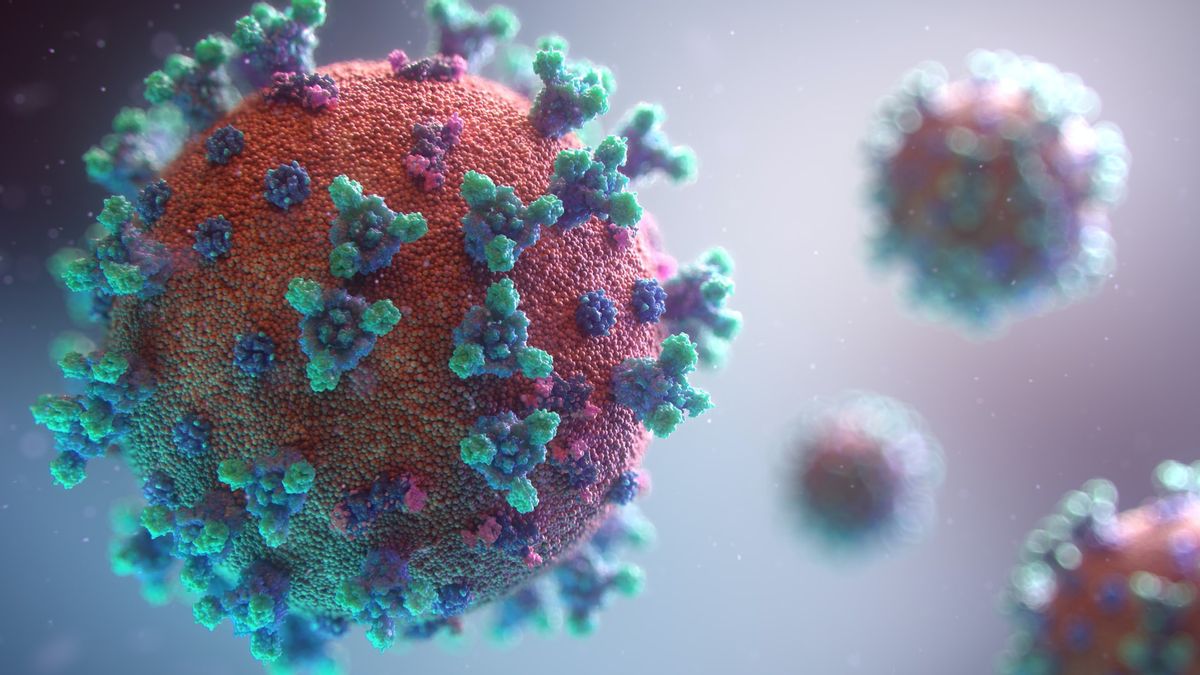JAKARTA - The Minister of Health of South Africa (South Africa) on November 25 announced the discovery of a new coronavirus variant, B.1.1.529. The virus is suspected to be the cause of the skyrocketing COVID-19 cases in South Africa this month. Virus mutations are natural. It is true. So what makes this mutation so shocking?
Researchers in South Africa are competing to analyze this variant of the new corona virus B.1.1.529. This variant is allegedly mutated quite drastically than other variants, including the Delta.
Nature said the new variant of the coronavirus was first identified in Botswana this month. Variants of the virus have even arrived in Hong Kong, brought by travelers from South Africa.
Now scientists are racing against time to try to understand the properties of the new variant of the coronavirus. Such as how much it can evade the immune response the vaccine has shaped and how severe the impact of the infection is.
There are currently at least 77 fully confirmed cases in South Africa's Gauteng province, four in Botswana and one in Hong Kong (directly linked to travel from South Africa). However, there are hints that the variant has spread more widely.
Seeing the increase in cases in South Africa even made the British Government rush to take a travel restriction policy. The UK announced it is temporarily banning flights from South Africa, Namibia, Botswana, Zimbabwe, Lesotho and Eswatini from 1200 GMT on Friday, with UK travelers returning from those destinations to be quarantined.
Seeing this response, of course, this new variant of the corona virus is difficult to underestimate. Indeed mutations from a virus are common, but the question is how dangerous is this new corona virus mutation? What makes it so shocking the citizens of the world?
Understanding mutationsBefore trying to understand how dangerous this new coronavirus mutation is, let's recall how the virus can mutate. Here's how it works.
As we know, the anatomy of viruses is so simple. Basically it is just genetic material wrapped in protein. The genetic material is made up of molecules that are usually represented as a series of letters.

Each part of this letter code contains instructions for making a special protein that allows a virus to function. What's important to know is that viruses have one goal: to reproduce.
But because the virus is so simple, that it can't do it all by itself. He needs a mother. Viruses need us to do it.
Whenever a virus infects a person, it uses that person's cells to make copies of itself. Viruses replicate these complex codes again, again, and again.
But in the process sometimes errors occur. The codes in the form of letters are sometimes deleted or added, even the codes are reversed.
This error is called a mutation. And it slightly changes the instructions for creating another new virus. Viruses that change slightly are called variants.
Easier to spreadSince viruses are constantly self-replicating, it's natural for them to change over time. Most viral mutations are harmless, they can even weaken the virus and completely disappear.
But other times, a series of mutations occurs that makes the virus slightly superior to our immunity. That's what began to attract scientists' attention to SARS-COv2 since September 2020.
The new coronavirus has spike proteins that look like antennae. The spike protein is what functions to bind to and infect human cells.
The problem is that spike proteins don't always fit in human cells, so they can't always penetrate and infect them. But variant B.1.1.7, which scientists call variant Alpha, has multiple mutations in the spike protein part: this makes it easier to bind to human cells. This is what can help the virus to be more contagious.

The number of mutations of the new corona virus studied is actually a lot. Alpha is one of the four variants that the World Health Organization (WHO) is currently most concerned about.
The other three are Beta (B.1.351) identified in South Africa in May 2020, Gamma (P.1) identified in Brazil in November 2020, and Delta (B.1.617.2) identified in India in October 2020. And currently there are at least the other nine variants are still under surveillance by the European CDC. Then how dangerous is this new variant of the corona virus B.1.1.529 that has just been identified?
How dangerous is variant B.1.1.529?Professor Tulio de Oliveira, director of the Center for Epidemic Response and Innovation in South Africa, said there was a constellation of mutations that was unusual and "very different" from other variants already circulating. "This variant did surprise us, it looks like it had a big leap in evolution," Oliveira said.
In a media briefing Prof de Oliveira said there were 50 mutations in all and more than 30 gave changes to the spike protein. It also poses a threat to people who have been vaccinated because they can be more bound to cells.
The most worrying part is that the mutation in this new variant enlarges the spike protein. If the Delta variant, which has been considered the most infectious of the other variants, only has two mutations, now the new variant of the corona virus B.1.1.529 has 10 mutations.
Of course, when compared to the corona virus that first broke out in Wuhan, it is very much different. That means vaccines, designed using the original strain, may not be as effective.
Moreover, several mutations in this new variant have been seen previously in other variants, which provides some insight into their possible role in this variant. That makes sense, because this also happens to the Delta variant which has the codes contained in the Espilon, Gama, and Beta variants.
"They gave us concern that this virus may have increased transmission," said Professor Richard Lessells of the University of KwaZulu-Natal in South Africa. "But it may also be able to break through parts of the immune system," he said.
*Read other information about COVID-19 MUTATIONS, read other interesting articles from Ramdan Febrian Arifin.
Other BERNASThe English, Chinese, Japanese, Arabic, and French versions are automatically generated by the AI. So there may still be inaccuracies in translating, please always see Indonesian as our main language. (system supported by DigitalSiber.id)









